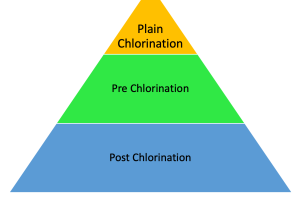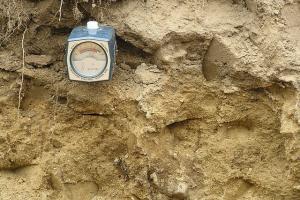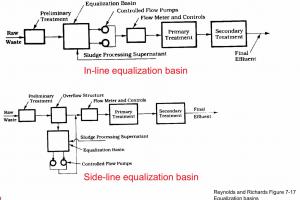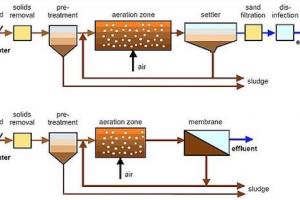Population Forecasting Methods & Techniques

Population is one of the most important factors for the design of the water systems, so it should be estimated, to know the increasing water demand and ensure continuous supply to them. Population data is obtained from previous records and the rate of increase is found this is used for further analysis, which may be by using the methods described below
- Arithmetic growth method
- Geometric growth method
- Curvilinear method
- Logistic method
- Decline growth method
- Ratio growth
Arithmetic Growth Method:
The arithmetic growth method assumes that the population grows at a constant rate over time. It estimates future population size by adding a fixed number of individuals to the current population in each period. For example, if a population grows by 1,000 individuals per year, the future population estimate will be the current population plus 1,000. It is based on the assumption that the rate of growth of the population is constant. It means that each year the population increase by the same increment.
Mathematically;
dp / dt = Ka
Where,
dp / dt is the rate of change in the population
Ka = the constant arithmetic increment
Ka can be determined by finding the slope of the graph of the population against time. The population in the future is thus estimated.
Geometric method:
The geometric growth method assumes that the population grows at a constant percentage rate over time. It estimates future population size by multiplying the current population by a growth factor in each period. For example, if a population grows by 2% annually, the future population estimate will be the current population multiplied by 1.02 (1 + 0.02).. It is based on the hypothesis that the rate of change of the population is proportional to the population. According to this, method it is assumed that the rate of increase of population growth in a community is proportional to the present population.
|
Mathematically: dP /dt ∝ P => dp / dt = Kg where Kg = Geometric Growth constant. If P0 is the population at any time t0 and Pf is the population at time tf then ∫Pf P0 dp/p = Kg ∫ tf t0 dt = Ln (Pf/P0 = Kg (tf/t0) => Ln (Pf/P0 = Kg Δt => (Pf/P0 = (e) Kg Δt and Pf = P0 (e) Kg Δt |
This method gives a somewhat larger value as compared to an arithmetic method and can be used for new cities with rapid growth. In normal practice, arithmetic and geometric growth average are taken.
Curvilinear method:
The curvilinear method recognizes that population growth rates may vary over time and that the rate of growth may slow down as the population reaches its carrying capacity. It involves fitting a curve to historical population data and extrapolating the curve to estimate future population size. The shape of the curve can be determined through statistical analysis or based on expert judgment.
In this, it is assumed that the population of a city will grow, in the same manner as in other cities in the past. This similarity between the cities includes geographical proximity, the similarity of the economic base, access to similar transportation systems, etc. In practice, it is difficult to find similar cities.
Logistic method:
The logistic method is a type of curvilinear method that models population growth using the logistic growth curve. This curve assumes that population growth starts exponentially but eventually slows down and levels off as it approaches the carrying capacity of the environment. The logistic method estimates future population size based on the current population, growth rate, and carrying capacity.
When the growth rate of the population due to birth, death, and migration are under normal situations and not subject to extraordinary changes due to unusual situations like war, epidemics earth quakes and refugees, etc. Then this method is used:
According to this method
P = P sat / (1+ ea+ bΔt), where P sat is the saturation population, of the community and a, b are constants. P sat, a, and b can be determined from three successive census populations and the equations are
Psat = 2 P0 P1P2 - P12 (P0 + P2) / (P0 P2 - P12)
Decline growth method:
The decline growth method is used when projecting a declining population. It assumes a negative growth rate, indicating that the population is decreasing over time. The decline growth method estimates future population size by subtracting a fixed number of individuals or applying a negative growth factor to the current population in each period. This method like logistics, assumes that the city has some limiting saturation population and that its rate of growth is a function of population deficit;
Ratio method:
The ratio growth method estimates future population size based on the ratio of the projected population to another variable, such as the current population or a specific age group. It involves determining the ratio between two population variables and applying that ratio to estimate future population size. For example, if the ratio of the population to the number of households is known, it can be used to estimate the future population based on projected changes in the number of households.
The ratio method of forecasting is based on the assumption that the population of a certain area or a city will increase in the same manner as a larger entity like a province, or a country. It requires the calculation of the ratio of locals to the required population in a series of census years. Projection of the trend line using any of the techniques and application of projected ratio to the estimated required population in the year of interest. This method of forecasting does not take into account some special calculations in a certain area but has the following advantages.
Here's an example to illustrate the process:
-
Current Ratio: Suppose the current ratio of population to the number of households in a city is 4 people per household. This means, on average, there are 4 individuals living in each household in the city.
-
Projected Change in Households: Let's say there is a projected increase in the number of households due to urban development or other factors. The forecast suggests an additional 1,000 households will be added to the city.
-
Applying the Ratio: Using the known ratio of 4 people per household, we can estimate the future population size. If we add 1,000 households (assuming each new household has the same average size), we would expect an increase of 4,000 people (4 people per household × 1,000 households) in the future population.
By using the ratio growth method, we leverage the relationship between the population and the selected variable (in this case, households) to estimate the future population size. However, it is important to note that the accuracy of the estimation relies on the assumption that the ratio remains stable and applicable in the future. Changes in household size or other factors influencing the ratio could affect the accuracy of the population estimate.












